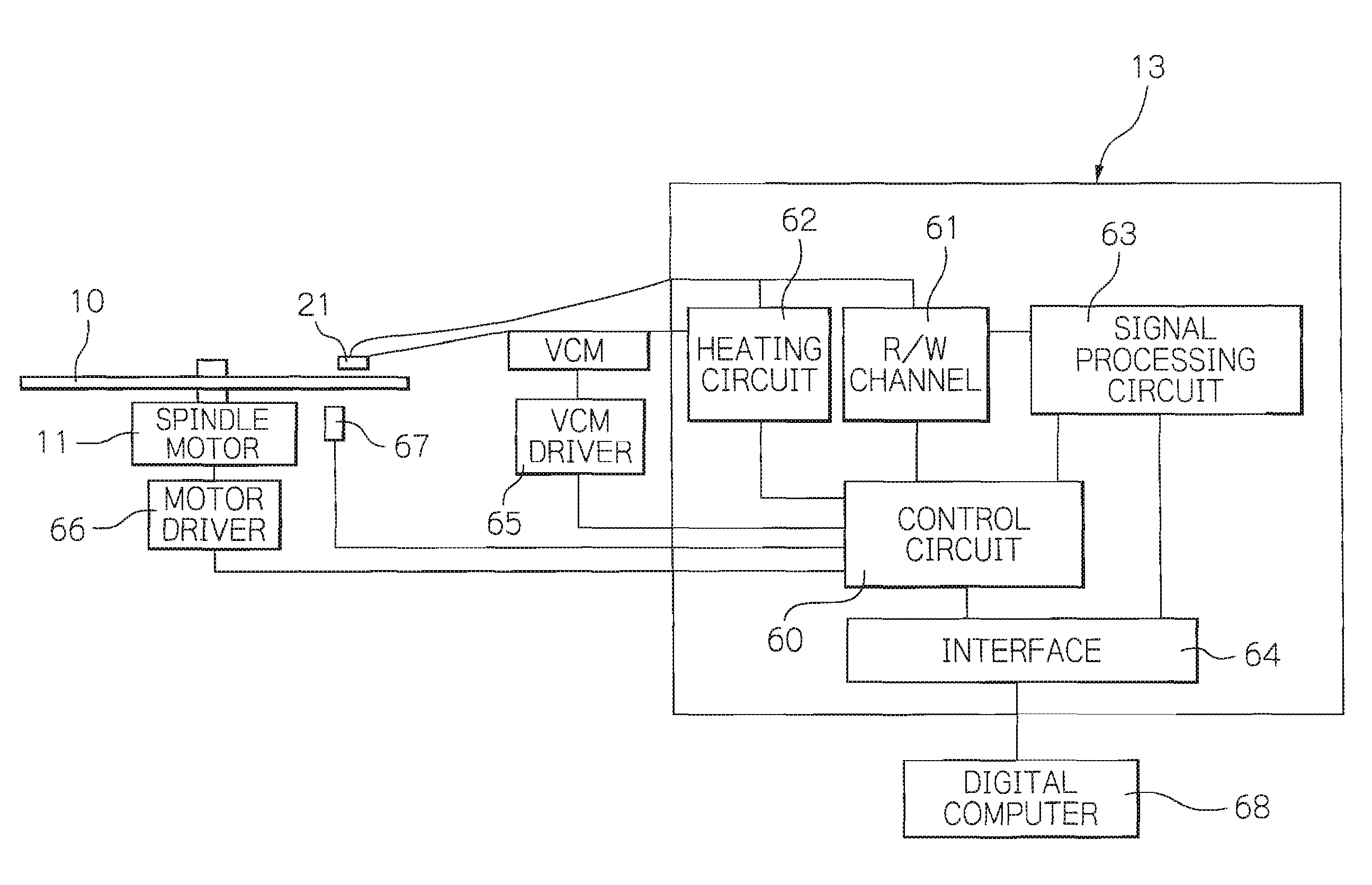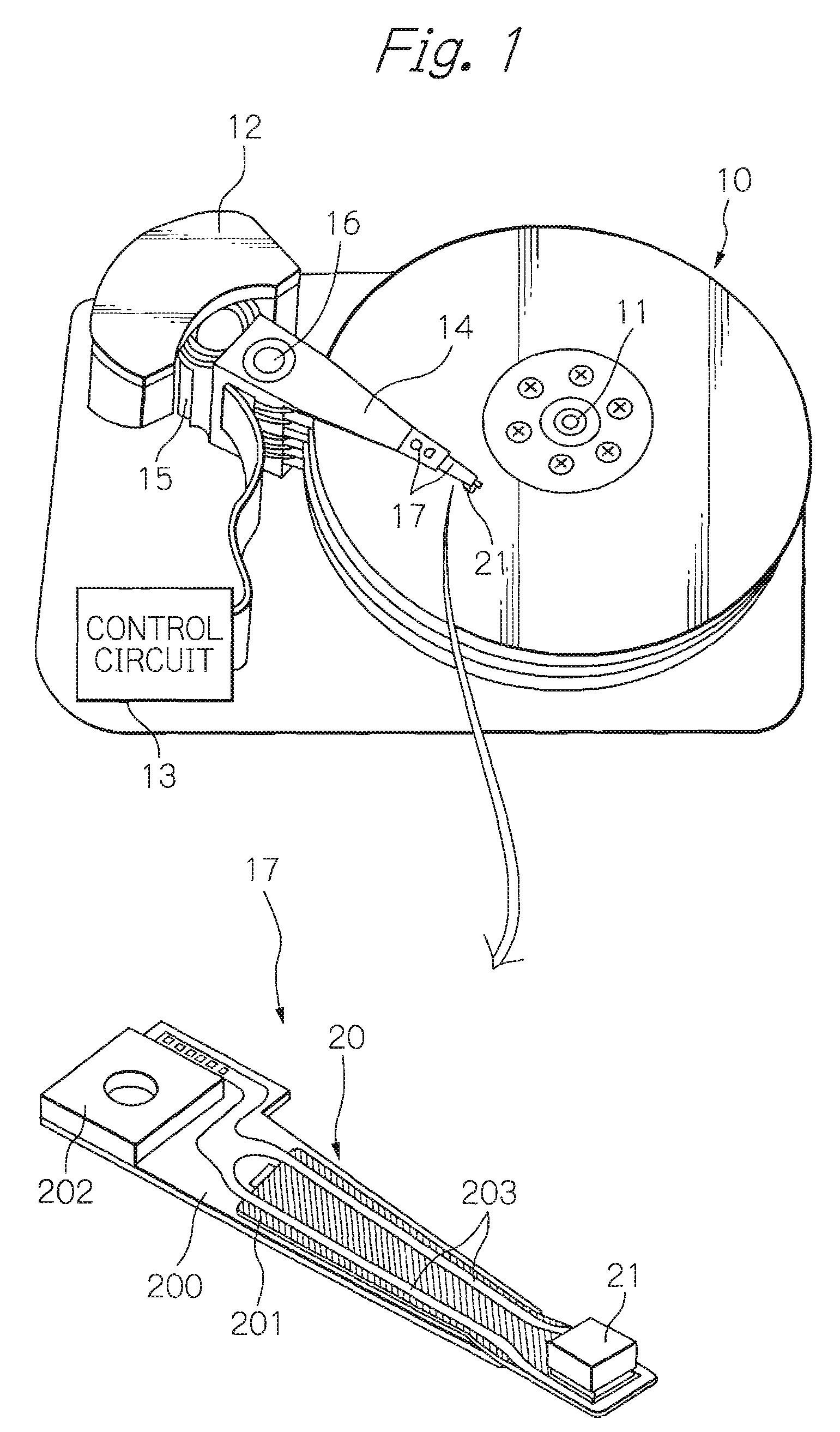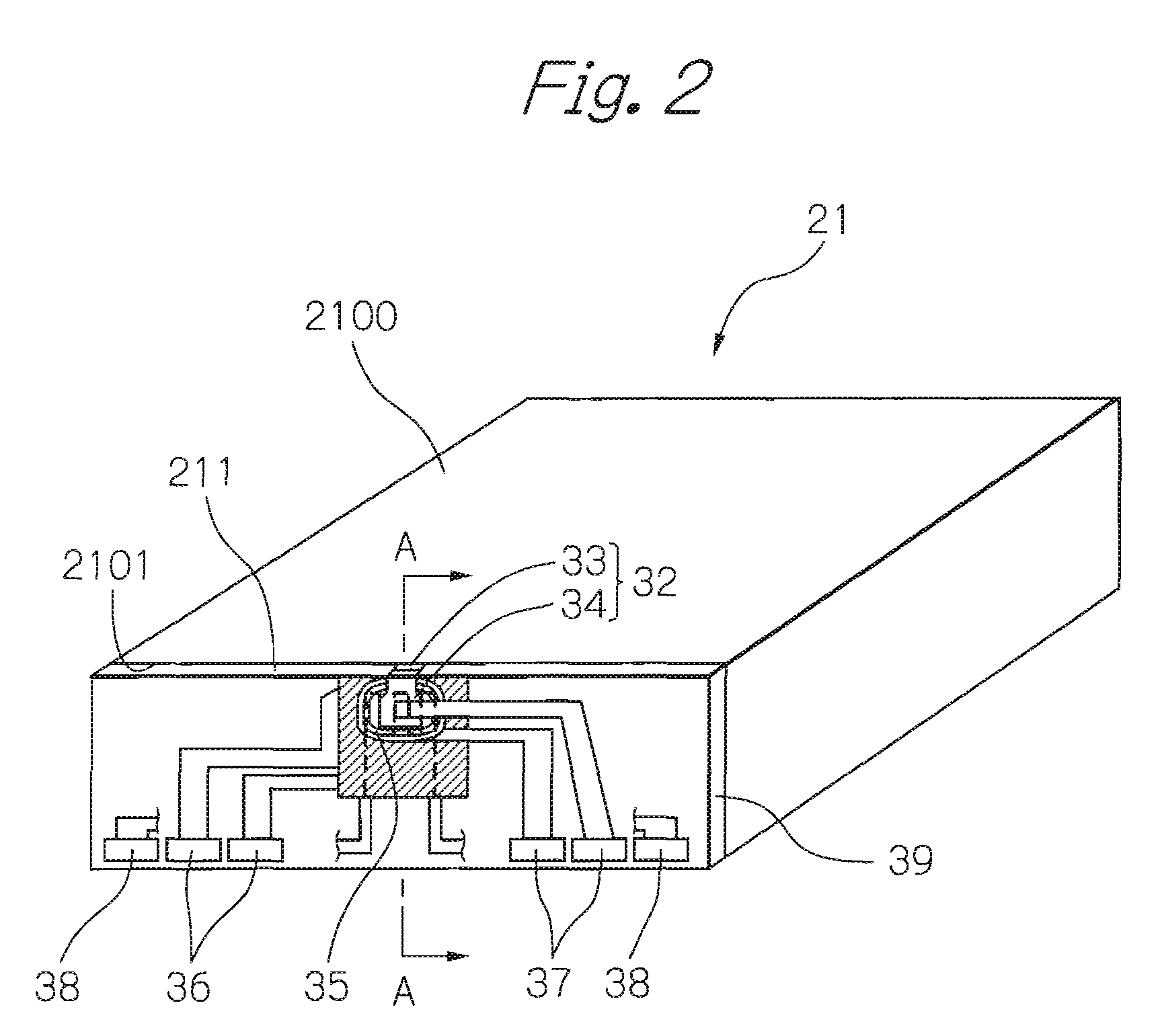Magnetic reproducing method for suppressing low temperature noise
a reproducing method and low temperature technology, applied in special recording techniques, instruments, record information storage, etc., can solve the problems of increasing the influence of temperature variation, generating barkhausen noise in the output of defective products, and reducing the read characteristi
- Summary
- Abstract
- Description
- Claims
- Application Information
AI Technical Summary
Benefits of technology
Problems solved by technology
Method used
Image
Examples
Embodiment Construction
[0044]FIG. 1 shows a perspective view schematically illustrating a main part of an embodiment of the magnetic recording and reproducing apparatus used for performing the magnetic reproducing method according to the present invention. In the perspective view of a head gimbal assembly (HGA), the side of the HGA that faces the surface of a magnetic recording medium is shown facing up.
[0045]The magnetic recording and reproducing apparatus in FIG. 1 is a magnetic disk drive apparatus. Reference numeral 10 denotes magnetic disks, which are multiple magnetic record media rotating about the spindle of a spindle motor 11, reference numeral 12 denotes an assembly carriage device for positioning a thin-film magnetic head 21 above a track, and reference numeral 13 denotes a recording / reproducing and heating control circuit for controlling read / write operations of the thin-film magnetic head 21 and further controlling heating operation of a heating element for heating the thin-film magnetic head...
PUM
| Property | Measurement | Unit |
|---|---|---|
| temperature | aaaaa | aaaaa |
| temperature | aaaaa | aaaaa |
| temperature | aaaaa | aaaaa |
Abstract
Description
Claims
Application Information
 Login to View More
Login to View More - R&D
- Intellectual Property
- Life Sciences
- Materials
- Tech Scout
- Unparalleled Data Quality
- Higher Quality Content
- 60% Fewer Hallucinations
Browse by: Latest US Patents, China's latest patents, Technical Efficacy Thesaurus, Application Domain, Technology Topic, Popular Technical Reports.
© 2025 PatSnap. All rights reserved.Legal|Privacy policy|Modern Slavery Act Transparency Statement|Sitemap|About US| Contact US: help@patsnap.com



